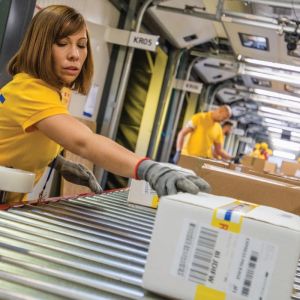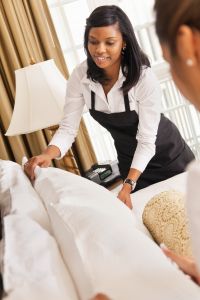
OSHA Keeps People Safe
What is Cal/OSHA?
A few weeks ago, someone posed the question, “What is Cal/OSHA?” My initial reaction was, “Doesn’t everyone know that?” Then I thought about it, and it can be confusing. There’s OSHA (Federal,) MIOSHA (Michigan), IOSHA (Indiana), Cal/OSHA, and 19 other state programs.
So, what does that all mean? Just what is OSHA, and what is Cal/OSHA?
OSHA is the Occupational Safety and Health Administration and is an agency of the US Department of Labor. OSHA was established by Congress in 1970, and signed into law by former US President Richard Nixon. OSHA’s administrators report to the Secretary of Labor, an appointed position in the Cabinet of the President of the United States.
The role of OSHA is to protect the rights of workers and to regulate workplace hazards. To do this, OSHA requires that employers must provide a safe and healthy workplace for their employees. OSHA sets and enforces safety standards, provides workplace training, and helps companies ensure their workers are safe.
What is Cal/OSHA? The Occupational Safety and Health Act, OSH, allows individual states and territories to have their own OSHA-approved workplace safety and health programs. Twenty-two state plans cover both private sector, state, and local government workers, and six state plans cover only state and local government workers, leaving private sector employee safety to federal OSHA.
Thus, Cal/OSHA is the State of California’s own Division of Occupational Safety and Health (DOSH). Not only does it protect the health and safety of people working in the state, Cal/OSHA is also charged with the safety of passengers riding on elevators, amusement rides, and tramways.
Cal/OSHA has been in the news over the past quarter century for its focus on Ergonomics regulations in the workplace.

Extended reaches hurt people–and profits!
In 1994, Cal/OSHA implemented what is called the Cal/OSHA Ergonomics Standard for General Industry. In this Standard, companies must implement ergonomics programs if
- Two or more workers performing similar tasks at a facility or job site are diagnosed with similar soft tissue illnesses or injuries within a 12-month period (note within 12-months, and not necessarily a calendar year)
If a facility or job site has injuries that “trigger” the Standard, then a company must
-Conduct a hazard assessment of “problem jobs”
-Provide training to employees in “problem jobs”
-Make improvements to “problem jobs”
-Continue making improvements and training employees in “problem jobs” until the hazards have been abated.

Hotel Housekeepers have one of the highest injury rates in California
In 2018 Cal/OSHA made even more headlines when it implemented the occupationally-specific Hotel Housekeeper Musculoskeletal Injury Prevention Program Standard (MIPP).
The MIPP is not injury-based. Cal/OSHA considers hotel housekeepers a high-hazard occupation and says their occupation has the highest rates of soft tissue injuries and illnesses in the state.
Cal/’OSHA requires the following of each and every hotel operator or company that rents and/or cleans rooms (or temporary living facilities):
-A written Hotel Housekeeper Musculoskeletal Injury Prevention Program plan, updated annually
-Annual workplace assessments of every housekeeper task that look for a variety of prescribed risk factors
-Annual training of every housekeeper, housekeeper supervisor and housekeeping manager (including the General Manager) in the requirements of the Standard, Hazards Identified
-The rights of housekeepers, unions and the State to access results of the assessments and training records
-Requirements to correct identified hazards
-Requirements to use safe work practices, and make sure housekeepers have the appropriate tools and equipment—and use their tools and equipment appropriately
-Mandatory assessments and training within three months of the opening of a new property or the completed, significant renovation of an existing property
-Assessments and training whenever previously unrecognized hazards are identified
To answer the question, Cal/OSHA is the branch of California’s state government that seeks to protect the health and safety of both workers and parts of the general public.
Since the MIPP Standard came into force, our team at QP3 ErgoSystems has conducted hundreds of tasks assessments, worked with and trained thousands of housekeepers, and identified well over ten thousand risk factors across California. We are often told by housekeepers and managers that have come from other properties, that our assessments and training are “better” than what they had previously experienced.
We have also identified many ways that housekeepers and their management teams can improve (and have improved) their work practices, the tools and equipment used, housekeeper productivity, efficiency and, safety, and the cleanliness of guest rooms. All of which are key contributors to good third-party guest satisfaction ratings.

Clean rooms make guests happy!
This effective QP3 ErgoSystems approach can be applied to help hotels and resorts around the world improve their housekeeping operations and guest satisfaction ratings. Because hospitality is about employees having the right tools and training to create an enjoyable experience for guests.
Contact QP3 ErgoSystems today by clicking on this link, or by calling us at 1-847-921-3113.
